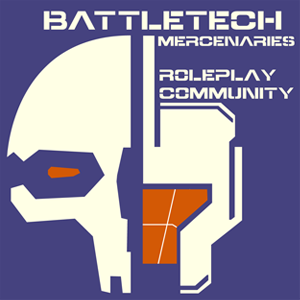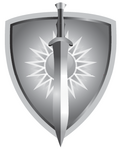Free Worlds League Military
This July, 2011 needs additional citations for verification. |
The Free Worlds League Military (FWLM) was the armed forces of the Free Worlds League from that nation's founding in 2271 until the dissolution of the League in 3078, and then after the League's rebirth in 3139. It was repeatedly referred to as the Free Worlds League Militia as well.
Contents
- 1 Organization
- 2 Command
- 3 Units
- 3.1 Deployment Status
- 3.2 Active Brigades (3067)
- 3.2.1 Free Worlds Legionnaires
- 3.2.2 Free Worlds Guards
- 3.2.3 Atrean Hussars
- 3.2.4 Atrean Dragoons
- 3.2.5 Knights of the Inner Sphere
- 3.2.6 Marik Militia
- 3.2.7 Fusiliers of Oriente
- 3.2.8 Oriente Hussars
- 3.2.9 Protectorate Guard
- 3.2.10 Sirian Lancers
- 3.2.11 Silver Hawk Irregulars
- 3.2.12 Stewart Dragoons
- 3.2.13 Orloff Grenadiers
- 3.2.14 Regulan Hussars
- 3.3 Active Brigades (3145)
- 3.4 Former Brigades
- 4 FWL WarShip Fleet
- 5 Military Academies
- 6 Military Ranks
- 7 Uniforms
- 8 References
- 9 Bibliography
Organization[edit]
For much of its history, the FWLM operated its units independently, but the Fourth Succession War and Andurien Secession taught them the value of using combined-arms tactics. To that end, different types of units were organized into one unit and ordered to work together.
Command[edit]
Parliament[edit]
According to the original charter of the Free Worlds League, command of the FWLM rests with Parliament. In times of war, Parliament was meant to give temporary command to a Captain-General. In practice, the only control Parliament has had over the military since the onset of the Succession Wars was through funding allocation.
Captain-General[edit]
Practical command of the FWLM has rested with the Captain-General for centuries. Originally a position that was purely military power, the position of Captain-General has accumulated power since the creation of the League. Originally, a Captain-General was appointed by Parliament to command the military during a war, and power returned to Parliament during peacetime. Disastrous command of the FWLM by individuals who were not of House Marik led to the right of first refusal being bestowed upon the Mariks. With a hereditary claim on the position, House Marik cemented its importance by ensuring that only a Marik Captain-General would be recognized as the legal representative of the Free Worlds League on the Star League Council, giving the position political power for the first time.
The position of Captain-General was later made permanent by Resolution 288. After the fall of the Star League, with the onset of the First Succession War, Resolution 288 was passed, which enabled the Captain-General to stay in power "for the duration of the emergency." With no definition of "the emergency," the position has even outlived the Free Worlds League, with no less than three different successors laying claim to the title.
Militarily, the Captain-General is the titular head of the FWLM. He or she is allowed to direct the military as seen fit, although Parliament has passed legislation to restrict the Captain-General's activities. In fact, the power of the Captain-General has waxed and waned since the onset of the Succession Wars.
Warden of the Perimeter Defenses[edit]
When the Free Worlds League was not at war, the official title of the head of state was that of Warden of the Perimeter Defenses, rather than Captain-General. The title was effectively considered a polite fiction by the Star League Defense Force during the waning years of the Star League after Captain-General Ewan Marik avoided using the title when attending the Star League Council, consistently referring to himself as Captain-General instead, a tradition continued by his son until the collapse of the Star League.[1] With the perpetual crisis of Resolution 288 the increasingly archaic title fell out of use almost entirely, with only those few Captains-General who voluntarily retired adopting it.[2]
League Central Coordination and Command[edit]
In the thirty-first century the League Central Coordination and Command (LCCC) was the military bureaucracy responsible for the FWLM. Composed of seven individuals and headquartered on Marik, the LCCC controlled logistics, planning, and captured territories. While some of the responsibilities of the members of the LCCC changed over the years, positions included the Minister of Defense, Director of Military Intelligence, Chief Armorer, and Quartermaster General.[3]
The Dormuth Council[edit]
During the Star League era the Free Worlds League was divided into five administrative military districts. Control of the districts ultimately rested with the Captain-General, but the Dormuth Council was responsible for providing the Captain-General with proper guidance for making any required military decisions. As the Dormuth Council officially filled an advisory role, the makeup of the Council changed depending on what the needs of the FWLM were at the time. An example of the membership makeup of the Council was that in place at the height of the Star League in the twenty-eighth century; represented on the Council in 2765 were the five military district marshals, a military representative from each of the major provinces of the Free Worlds League, the fleet admiral of the Free Worlds League Navy, an advisor on irregular forces, an appointee representing the military interests of all the non-aligned worlds that lacked provincial forces and a Parliamentary liaison. The presence of an appointee to represent the non-aligned worlds had been mandated at an earlier date by the Parliament, which had been invoked by the provisions of the famous Camlann vs. Free Worlds legal ruling.[4]
The distinction between membership of the Council for the five military district marshals and attendance at the council by representatives of the provincial militaries was an important legal one; following the Star League Council Edict of 2650 Captain-General Ward Marik had separated the provincial forces from the federal FWLM both in terms of the chain of command and funding. These provincial forces then qualified for the exemptions against disbandment within the Edict because they qualified as private military forces, rather than federal military forces. This decision - in line with recommendations made by the Dormuth Council of the time - meant that having the respective heads of these provincial militaries on the Dormuth Council would have confirmed those forces to be equals to the federal forces of the FWLM, causing the Free Worlds League to be in breach of the Edict. Having adjutants to the various provincial military leaders attend rather than the leaders themselves was a technicality that prevented the Edict being breached, although the Star League Intelligence Command (SLIC) kept a watchful eye on the relationship between the provincial militaries and the Dormuth Council to ensure that provincial forces only operated within the borders of their respective provinces - any attempt to deploy those forces outside their home provinces would have been brought to the attention of the Star League Council by SLIC as a violation of the edict.[4]
The headquarters of the Dormuth Council was maintained in a secret location in the Marik system; this was an intentional measure to ensure that the command structure of the FWLM was preserved in the event of an event or crisis engulfing the capital of the Free Worlds League.[4]
It was widely speculated at the time that Captain-General Kenyon Marik was going to formally reorganize the Dormuth Council, restructuring it into a leaner body to provide more effective military leadership; the Dormuth Council was subsequently replaced with the LCCC.[4]
Military Districts[edit]
The Free Worlds League was divided into several administrative military districts, each commanded by a Marshal.[5] During the Star League era there were five such military districts, each with a different area of responsibility. The headquarters for the five districts were based on the worlds of Dieudonné, Oriente, Kanata, Tamarind and Gibraltar. The district commanded from Dieudonné was responsible for the Terran Hegemony border, while the district based out of Oriente was responsible for the FWLM forces based within the Federation of Oriente. Kanata was the headquarters for the district responsible for the Free Worlds League borders with the Capellan Confederation and Magistracy of Canopus, while the district based out of Tamarind was responsible for the Lyran Commonwealth border, including the Bolan Thumb. The last of the five districts, based out of Gibraltar, was responsible for the anti-spinward and rimward regions of the Free Worlds League.[4]
It was predicted by SLIC that if the Free Worlds League shifted completely to a war footing the military district based out of Gibraltar would be disbanded and the forces reassigned to the other districts;[4] this was certainly the case by the thirty-first century, at which point the FWLM was divided into four military districts based out of the worlds of Dieudonné, Oriente, Tamarind and Ryerson.[5]
The Marshal commanding each district had a great deal of latitude within his or her district, and were directly responsible for performing defensive operations within their districts. Marshals also enjoyed a great deal of influence within the LCCC, often formulating and suggesting plans to the LCCC involving the troops under their command, but Marshals were not authorized to conduct offensive operations outside the boundaries of their districts without approval from the LCCC. By retaining control over approvals for offensive deployments and for the redeployment of forces between districts the LCCC ensured that at a strategic level there would always be ample forces available for FWLM operations.[5]
Units[edit]
The various brigades of the FWLM are classified as either "League" units or "provincial" units. League units are beholden only to the Captain-General and are supported directly by the LCCC. Provincial units often report to the leader of their home province, though they must also answer to the Captain-General. Provincial units are generally supported by their home province, though the LCCC provides some support. Links to units (existent as of 3059) are provided.
Deployment Status[edit]
In 2750 the FWLM had a strength of 60 BattleMech Forces and 30 WarShips. As of 2765 they were well-equipped with 95 'Mech regiments, and the naval fleet strength was listed at 47 vessels.[6]
Active Brigades (3067)[edit]
These brigades were active as of 30th September 3067, just prior to the Word of Blake Jihad that would result in the League's fragmentation.[7] (While there is a Field Report: from 3079, that data is not included due to FWLM is no longer an united force at that date.)
Free Worlds Legionnaires[edit]
| Free Worlds Legionnaires | |
|---|---|
| Created from the ashes of the Defenders of Andurien after the Andurien Secession, the Free Worlds Legionnaires were carefully vetted to ensure loyalty to the Free Worlds League as a whole. They also inherited the tradition of combined-arms warfare from the Defenders. | |
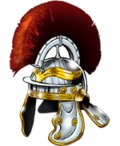
|
1st Free Worlds Legionnaires 2nd Free Worlds Legionnaires 3rd Free Worlds Legionnaires 4th Free Worlds Legionnaires 5th Free Worlds Legionnaires 6th Free Worlds Legionnaires 7th Free Worlds Legionnaires 8th Free Worlds Legionnaires |
Free Worlds Guards[edit]
| Free Worlds Guards | |
|---|---|
| Long considered the premier units of the FWLM, the Free Worlds Guards jealously guarded that reputation following the creation of the Knights of the Inner Sphere. | |
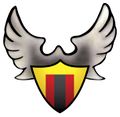
|
1st Free Worlds Guards 2nd Free Worlds Guards 3rd Free Worlds Guards |
Atrean Hussars[edit]
| Atrean Hussars | |
|---|---|
| The Atrean Hussars were formed as an experiment by Captain-General Samuel Marik to try and get around the restrictions of the Home Defense Act. Despite their direct loyalty to the Captain-General, their relatively young age and the poor performance of the Atrean Hussars have led to the unit being close to disbandment for most of its existence. | |

|
Atrean Hussars |
Atrean Dragoons[edit]
| Atrean Dragoons | |
|---|---|
| The Atrean Dragoons are a command of the Free Worlds League Military. | |

|
1st Atrean Dragoons 11th Atrean Dragoons 12th Atrean Dragoons |
Knights of the Inner Sphere[edit]
| Knights of the Inner Sphere | |
|---|---|
| Created by Captain-General Thomas Marik in 3055, the Knights of the Inner Sphere were meant to reintroduce chivalry to the Inner Sphere. Becoming the most prestigious unit in the League during the False Thomas' reign, the Knights boasted both some of the most elite troops in the FWLM and high levels of advanced equipment, including a number of new 'Mech designs reserved exclusively for their use only. Both regiments were wiped out during the Jihad. | |

|
1st Knights of the Inner Sphere 2nd Knights of the Inner Sphere |
Marik Militia[edit]
| Marik Militia | ||
|---|---|---|
| Created along with the Free Worlds League, the Marik Militia is the largest brigade in the FWLM. Forming the backbone of the Free Worlds League Military, it contains regiments whose experience range from green to elite. As of 3067, there were sixteen regiments in the Marik Militia brigade, making it one of the largest formations in the Inner Sphere. | ||

|
1st Marik Militia 2nd Marik Militia 4th Marik Militia 5th Marik Militia 6th Marik Militia 9th Marik Militia 10th Marik Militia 13th Marik Militia |
15th Marik Militia 18th Marik Militia 20th Marik Militia 23rd Marik Militia 25th Marik Militia 30th Marik Militia 31st Marik Militia 34th Marik Militia |
Fusiliers of Oriente[edit]
| Fusiliers of Oriente | |
|---|---|
| The Fusiliers of Oriente are the more prestigious of the Grand Duchy of Oriente's provincial forces. | |

|
Ducal Guard 1st Fusiliers of Oriente 2nd Fusiliers of Oriente 3rd Fusiliers of Oriente 4th Fusiliers of Oriente 5th Fusiliers of Oriente |
Oriente Hussars[edit]
| Oriente Hussars | |
|---|---|
| The Oriente Hussars are the less prestigious brigade of the Oriente military forces. | |
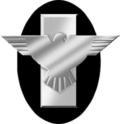
|
1st Oriente Hussars 2nd Oriente Hussars 3rd Oriente Hussars 4th Oriente Hussars 5th Oriente Hussars 6th Oriente Hussars |
Protectorate Guard[edit]
| Protectorate Guard | |
|---|---|
| The Protectorate Guard form the provincial forces of the Border Protectorate. Not to be mistaken for the Protectorate, loyal to Anton Marik. | |
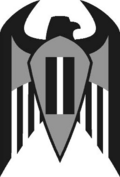
|
Iron Guard Steel Guard |
Sirian Lancers[edit]
| Sirian Lancers | |
|---|---|
| The Sirian Lancers, provincial force of the Sirian Concordance, has had a disproportionate effect on the history of the Free Worlds League since the end of the Fourth Succession War. Janos Marik's decision to preemptively withdraw left the worlds of the Concordance in the hands of the nascent Federated Commonwealth. When Thomas Marik launched Operation Guerrero in 3057, it stopped short of reclaiming those worlds. When an insane ComStar Precentor, Alisendar Gyrn, took control of Sirius and Procyon, the Lancers threatened to invade, with or without support from the LCCC. They decided to aid the three regiments, who liberated the worlds to find "reeducation camps" and other atrocities. Angry at the Captain-General and the LCCC for not liberating their homeworlds sooner, the Lancers all but went their own way. In 3068, the Lancers attacked Skye, sparking the incident that led to war with Skye Province. Soon afterward, the Lancers defected to the Word of Blake Militia. | |
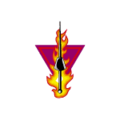
|
1st Sirian Lancers 2nd Sirian Lancers 3rd Sirian Lancers |
Silver Hawk Irregulars[edit]
| Silver Hawk Irregulars | |
|---|---|
| The Silver Hawk Irregulars were the provincial force of the Silver Hawks Coalition. Much like the coalition itself, the regiment's status depended on the world that was responsible for supporting it, with some worlds providing the dregs of society and others their best and brightest. They benefited the most from Thomas Marik's reforms, as their training and equipment was generally upgraded and evened out. The Irregulars were shattered during the Jihad. The Irregulars were resurrected in May of 3137 by Captain-General Anson Marik of the Marik-Stewart Commonwealth to oppose the offensive by the Lyran Commonwealth. They have so far lived up to the "Irregular" part of their moniker by employing irregular tactics against their better-equipped enemies. | |
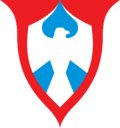
|
Falcons Gryphons |
Stewart Dragoons[edit]
| Stewart Dragoons | |
|---|---|
| The military force of the Stewart Commonality, the Stewart Dragoons consist of two decently-equipped regiments. | |
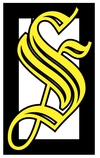
|
Home Guard Juggernaut |
Orloff Grenadiers[edit]
| Orloff Grenadiers | |
|---|---|
| The provincial regiments of the Duchy of Orloff, the Orloff Grenadiers are synonymous with competence. Orloff takes great pride in its troops, with an initiation ritual that binds them together. Ironically, theirs was one of the loudest voices against Thomas Marik's attempts to centralize power and unify the FWLM because it would have meant giving up many of their traditions. | |
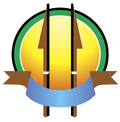
|
1st Orloff Grenadiers 6th Orloff Grenadiers 8th Orloff Grenadiers |
Regulan Hussars[edit]
| Regulan Hussars | |
|---|---|
| The Regulan Hussars were formed from the military of the Principality of Regulus. They often opposed the Captain-General's control. The famed Rolling Thunder company is part of the 1st Regulan Hussars. | |
| 1st Regulan Hussars 2nd Regulan Hussars 4th Regulan Hussars 5th Regulan Hussars 9th Regulan Hussars | |
Active Brigades (3145)[edit]
These brigades were activated by various micro-states that arose after the League's dissolution in 3079 and later became part of the reborn FWLM following the League's rebirth as a united nation in July 3139.[8]
In addition to these brigades the later incarnation of the FWLM also included the following older commands listed above:[8]
- Atrean Dragoons
- Free Worlds Guards
- Fusiliers of Oriente
- Oriente Hussars
- Orloff Grenadiers
- Protectorate Guard
- Regulan Hussars (after 3148)
- Silver Hawk Irregulars
Clan Protectorate Military[edit]
| Clan Protectorate Military | |
|---|---|
| The Clan Protectorate Military was formed by Jessica Marik in 3139, after the events of Operation Homecoming. As a reward for their service, these Clan forces were giving a voice and territory within the re-formed Free Worlds League. Those warriors in the League consist of a mix of Free World natives and Clan warriors from the Spirit Cats and Nova Cat refugees. | |
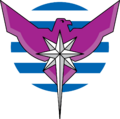
|
Shiva Keshik Purifier Cluster Omicron Cluster First Protectorate Guardians Second Protectorate Guardians First Nova Cat Provisionals |
Covenant Guards[edit]
| Covenant Guards | |
|---|---|
| The Covenant Guards were created in 3137 from a mixture of mercenaries and militia when the Covenant Worlds broke from the Republic of the Sphere.
| |
| 1st Covenant Guards 2nd Covenant Guards | |
Loyalty Defenders[edit]
| Loyalty Defenders | |
|---|---|
| The Loyalty Defenders were formed after the League's collapse to defend the planet Loyalty and the Duchy of Graham-Marik's worlds. Both regiments specialized in planetary defense and served against the Lyran Commonwealth and Clan Wolf during the 3130s-40s.
| |
| 1st Loyalty Defenders 2nd Loyalty Defenders | |
Rim Commonality Guards[edit]
| Rim Commonality Guards | |
|---|---|
| The Rim Commonality Guards were formed after the League's collapse from Marik Militia units and mercenaries opting for stable employment with the newly-independent Rim Commonality. The Guards were mainly defensive in orientation, adept at repelling raiders and discouraging foreign attacks.
| |
| 1st Rim Commonality Guards 2nd Rim Commonality Guards 3rd Rim Commonality Guards 4th Rim Commonality Guards 5th Rim Commonality Guards 6th Rim Commonality Guards | |
Tamarind Regulars[edit]
| Tamarind Regulars | |
|---|---|
| The Tamarind Regulars were formed after the League's collapse from the Marik Militia units stationed within the Duchy of Tamarind-Abbey. Taking heavy losses defending their home during Operation HAMMERFALL, the Tamarind Regulars are loyal to the reborn League but devoted to the Duchy above the rest of the nation.
| |
| 1st Tamarind Regulars 4th Tamarind Regulars 7th Tamarind Regulars 8th Tamarind Regulars 9th Tamarind Regulars 10th Tamarind Regulars | |
Former Brigades[edit]
Defenders of Andurien[edit]
| Defenders of Andurien | |
|---|---|
| The Defenders of Andurien were the original provincial military force of the Duchy of Andurien, eliminated following the end of the Andurien Secession. Some former members of the Defenders (after an extensive background check by SAFE) formed the core of the Free Worlds Legionnaires, insuring the Defenders' emphasis on combined-arms operations lived on. | |

|
1st Defenders of Andurien 2nd Defenders of Andurien 3rd Defenders of Andurien 4th Defenders of Andurien 5th Defenders of Andurien 6th Defenders of Andurien |
Marik Guard[edit]
The provincial force of the Marik Commonwealth, the Marik Guard was destroyed during the Fourth Succession War.
FWL WarShip Fleet[edit]
2765[edit]
The Free Worlds League Navy consisted of five fleet groups, with each fleet assigned to a League military district. Each fleet consisted of four Atreus-class battleships, one Aegis-class heavy cruiser, and two League-class destroyers. Other WarShips, JumpShips, and DropShips were assigned to each fleet as needed.
The League's larger provincial militaries also had access to a approximately eight WarShips, but these formations were intended for defensive use only due to Star League and budget constraints.
- First Oriente Provincial Squadron
- Second Oriente Provincial Squadron
- Regulus Squadron
- Andurien Squadron
3059[edit]
The Public Fleet
- FWLS Impavido - Impavido-class Destroyer
- FWLS Janos Marik - Impavido-class Destroyer
- FWLS Tirana - Zechetinu-class Corvette
- FWLS Menelaus - Agamemnon-class Heavy Cruiser
The Secret Fleet
- FWLS Liberty - Vincent-class Corvette
- FWLS Karelia - Zechetinu-class Corvette
- FWLS Attica - Zechetinu-class Corvette
- FWLS Raven - Essex-class Destroyer
- FWLS Schrack - Essex-class Destroyer
- FWLS Olympic - Aegis-class Cruiser
Vessels undergoing Trials
- FWLS Sparta - Zechetinu-class Corvette
- FWLS Phrygia - Impavido-class Destroyer
- FWLS Aineas - Agamemnon-class Heavy Cruiser
3067[edit]
- FWLS Lancelot (with the FWLS Santorini)
- FWLS Galahad (with the FWLS Santorini)
- FWLS Tristram (with FWLS Sardis)
- FWLS Bedevere (with FWLS Sardis)
- FWLS Gawain (with FWLS Corinth)
- FWLS Mordred (with FWLS Corinth)
- FWLS Bors (with FWLS Delos)
- FWLS Kay (with FWLS Delos)
- FWLS Leodegrance (with FWLS Thessaly)
- FWLS Percival (with FWLS Thessaly)
- Aegis-class (Heavy Cruiser)
- Agamemnon-class (Heavy Cruiser)
- Black Lion-class (Battlecruiser )
Military Academies[edit]
| Free Worlds League Military Academies | |
|---|---|

|
Allison MechWarrior Institute
Located on New Olympia, within the Marik Commonwealth, cadets of AMI nurture a rivalry with those of the neighboring Lloyd Marik-Stanley Aerospace School. Specializing in training MechWarriors, AMI reserves ten percent of each incoming class for scions of Dispossessed MechWarriors. |

|
Lloyd Marik-Stanley Aerospace School
Fewer than two hundred miles away from the Allison MechWarrior Institute, LMS cadets are fiercely competitive with their ground-bound rivals. In addition to training aerospace pilots, LMS has a supplementary curriculum that trains DropShip and JumpShip pilots as well. |

|
Aitutaki Academy
The most independent-minded of the FWLM's academies, Aitutaki has served the Principality of Regulus for centuries. It has long been a center of anti-Marik sentiment, requiring a close watch on the school by SAFE. Aitutaki is well known for its high-quality technical tradition, producing some of the finest technicians in the League. |

|
Princefield Military Academy
The premier training center for the Duchy of Oriente, Princefield cadets are cutthroat in their competition due to the fact that only the top twenty percent of each class graduates to MechWarrior training after eighteen months of military history, strategy, and tactics. Despite the fact that it is not in their home province, many members of House Marik graduated from Princefield after Janos graduated in 2979. |

|
Hero Training Institute
Founded in 2989 on the planet Maxwell, the Hero Training Institute offers those with no legitimate reason to become a MechWarrior the chance to become such a hero. While the quality of the training is poor, HTI offers a real opportunity to those who would otherwise not have one. |

|
Humphreys Training Academy
The Humphreys Training Academy was originally the principal training centers for those hailing from the Duchy of Andurien. After Andurien lost its bid to secede in the 3030s, its military academy was taken over by the LCCC and federalized. The graduates of LTA then began to fill the ranks of the Free Worlds Legionnaires. |

|
Orloff Military Academy
Except for the members of the Orloff family, entrance is granted only through invitation. The Academy offers only MechWarior MOS but also provides advanced courses in leadership and strategy for the use in combined arms operations. |
| Nellus Academy
A small military academy on Nestor, covering a wide range of specializations. It trains youth for four years, their graduation timed so that they are of age to join the FWLM. | |
Military Ranks[edit]
| Rank | Insignia |
|---|---|
| Private | |
| Private, First Class | |
| Corporal | 
|
| Sergeant | 
|
| Staff Sergeant | 
|
| Master Sergeant | 
|
| Sergeant Major | 
|
| Lieutenant, Junior Grade | |
| Lieutenant, Senior Grade | |
| Captain | |
| Force Commander | 
|
| Lieutenant Colonel | 
|
| Colonel | 
|
| General | |
| Marshal | |
| Captain-General | 
|
Uniforms[edit]
3054
References[edit]
- ↑ Field Report 2765: FWLM, p. 3: "RE: Warden of the Perimeter Defenses"
- ↑ Handbook: House Marik, p. 98: "Free Worlds League Military - Captain-General"
- ↑ Field Manual: Free Worlds League, pp. 13–14: "League Central Coordination and Command"
- ↑ 4.0 4.1 4.2 4.3 4.4 4.5 Field Report 2765: FWLM, pp. 5–6: "Academies and Command Centers"
- ↑ 5.0 5.1 5.2 Field Manual: Free Worlds League, pp. 14–15: "Military District Commands"
- ↑ Historical: Liberation of Terra Volume 1, p. 49: "Member State Troop Strength"
- ↑ Field Manual: Updates, pp. 159–162
- ↑ 8.0 8.1 Field Manual: 3145, p. 115-116
- ↑ Field Report 2765: FWLM, p. 20
- ↑ Field Manual: Free Worlds League, p. 117: "FWL WarShip Fleet"
- ↑ Field Manual: Updates, p. 144
- ↑ Field Manual: Free Worlds League, p. ??: "Rank Insignias"[citation needed]


